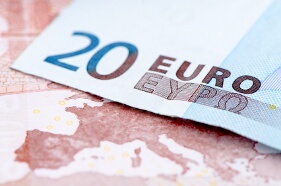The euro demonstrated big losses against the US dollar this week, falling to the lowest level in more than two years. The euro’s performance against other currencies was mixed: the shared 18-nation currency ended the week lower against the Great Britain pound, flat versus the Australian dollar while against the Japanese yen, the euro reached a new multi-year high.
Last week, analysts were expecting resumption of decline for EUR/USD, but it did not happen. As it turned out, experts were right about the direction of the currency pair’s movement, just missed timing of the move as the drop happened this week.
The euro was performing poorly ahead of the major event for this week — the policy meeting of the European Central Bank. Yet the currency climbed after the ECB policy announcement, and it looked like that the currency may hold ground after all. But Friday’s non-farm payrolls did not give a change for the euro to recover and it slumped to a new low.
Many other major central banks were holding meetings this week too: the Bank of England, the Bank of Canada and the Reserve Bank of Australia. All of them kept their monetary policies unchanged.
Among other important news was the downgrade of Japan’s credit rating by Moody’s Investor Service. It allowed the euro to gain on the yen as the Japanese currency was the weakest on the Forex market.
EUR/USD by 1.2 percent to 1.2289 this week — the lowest weekly close since August 2012. EUR/GBP settled at 0.7892 — noticeably above the weekly low of 0.7832 but far below the opening of 0.7961. EUR/AUD ended the week flat at 1.4759. EUR/JPY rallied from 147.96 to 149.24 — the strongest weekly settlement since September 2008.
If you have any questions, comments or opinions regarding the Euro,
feel free to post them using the commentary form below.
